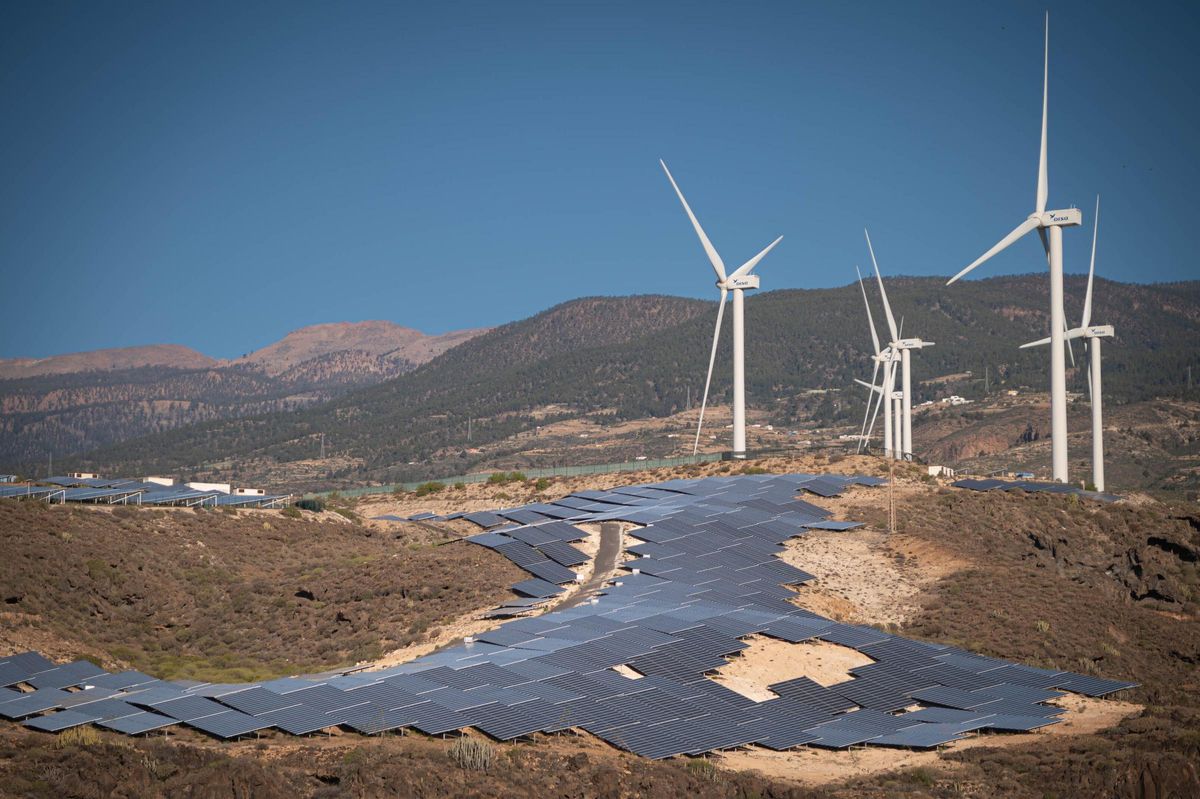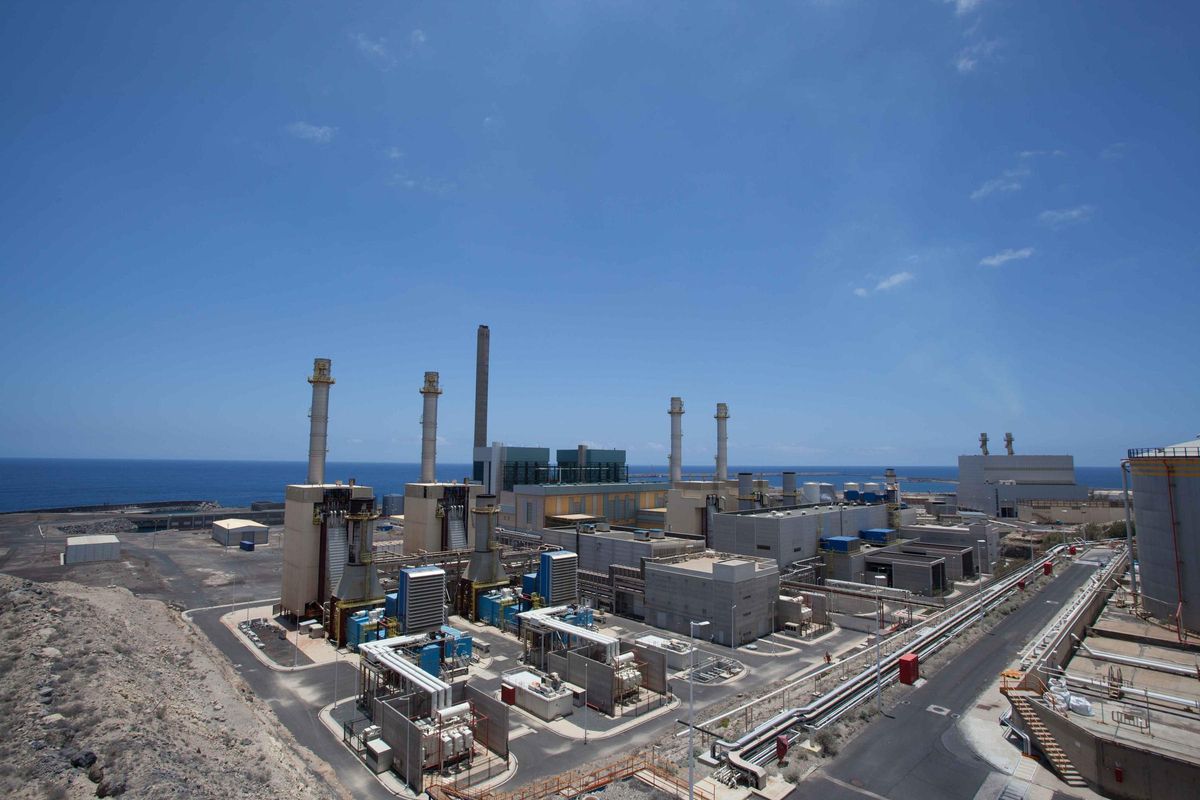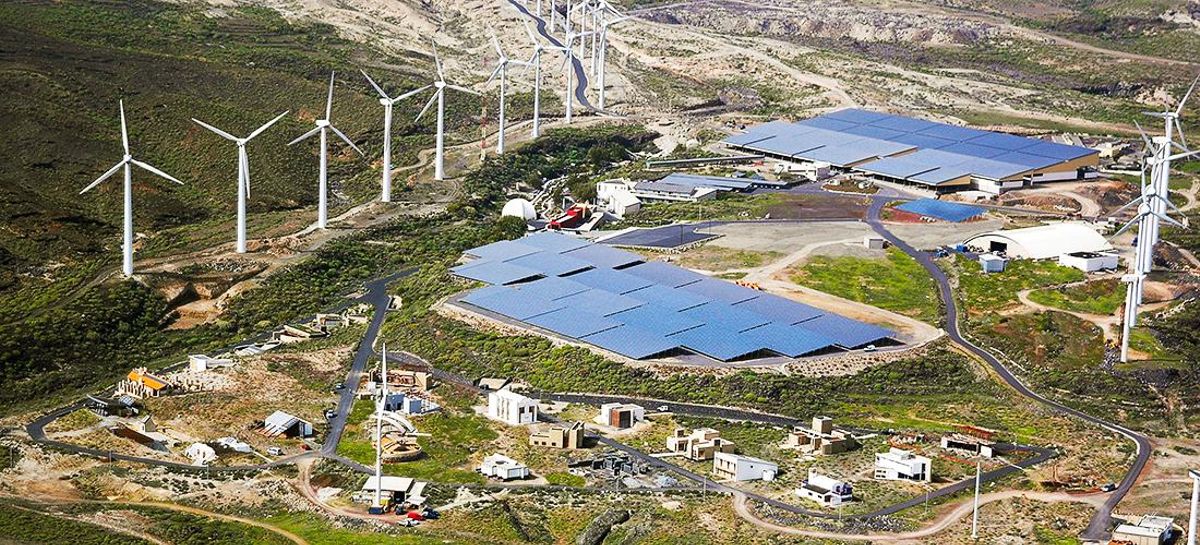
Map with the main infrastructure of the Tenerife electricity grid. / Ed
Historic Bruton on the Iberian Peninsula last Monday served to reveal the advantages and disadvantages of isolated electrical systems such as those in the Canary Islands. The fact that the Archipelago, alongside the Balearic Islands, is the only region that was spared from Energy zero—despite the impact on telecommunications—is the sole benefit of a Canary Network that lacks supportive connections with other countries due to its geographical position, unlike the Peninsula, which is connected to Portugal, France, and Morocco.
This is why the Canary Islands has seven systems, one for each island, with certain interconnections such as Fuerteventura with Lanzarote or the one set to be established between Tenerife and La Gomera, which do not provide the capability to link with a continental system.
All Disadvantages
Aside from that detail, everything else comprises disadvantages. Tenerife has experienced firsthand the fragility of the grid that supplies the necessary energy for watching television, accessing the internet, cooking or refrigerating food, opening garage doors, or withdrawing cash. Although they narrowly avoided Monday’s blackout, the causes of which remain unknown, Tenerife has endured up to six instances of sudden darkness in the last 25 years of this century.
The six major power cuts recorded in Tenerife—in the years 2002, 2005, 2009, 2010, 2019, and 2020—were caused by adverse weather conditions, such as the floods of 2002, the storm Delta in 2005, and a lightning strike in 2009. However, they were primarily attributable to an energy framework whose vulnerabilities—particularly the absence of a robust network to rely on during destabilisations—are inherent given the isolation of being in the middle of the Atlantic Ocean, over 1,500 kilometres away from Europe.
No Comparison
Guillermo Galván, an energy expert and head of the Wind Department at the Technological and Renewable Energies Institute (Iter) in Granadilla, asserts that “the Canary Islands cannot be compared with the Peninsula unless a cable is established connecting us to Europe, which is currently completely unfeasible.” The Peninsula’s system is interconnected with the entire continent, which, according to Galván, grants a “robustness” that Tenerife lacks.
Thus, the major outage on Monday in the Peninsula was not mirrored in Tenerife, which has experienced six total or partial outages since the beginning of this century, alongside 12 across the entire archipelago, including those in La Gomera and El Hierro in 2023, and La Palma in 2019, 2018, and 2013, as well as Gran Canaria in 2012.
The power network in Tenerife exhibits numerous further vulnerabilities, primarily reliant on a single thermal power plant, specifically Granadilla de Abona. This mixed plant, operated by Endesa, consists of two steam generators and two diesel engines powered by fuel. Additionally, it has two gas turbines and two combined cycles that utilise diesel.
There are four other smaller thermal plants located in Santa Cruz, Candelaria, Arona, and Guía de Isora. The island’s energy mix is supplemented by renewable energy facilities, principally comprising 13 wind farms and around 20 photovoltaic plants.

Wind and photovoltaic parks in Arico, in the south of Tenerife. / Arturo Jiménez
All this infrastructure is clean and is centred in the same area as the main conventional plant in Granadilla: the south. Furthermore, the municipality that houses the majority of the renewable infrastructure is Arico, referred to as “The Tenerife battery” by its mayor, Olivia Delgado. This concentration in the south creates another imbalance that affects the integrity of the whole system.
The Transportation Network
Besides current generation capabilities, the Tenerife network is augmented by the transmission grid. It consists of around twenty substations positioned throughout the island, which are vital for the distribution of energy, adjusting the voltage and frequency of electricity to transport and distribute it safely and efficiently. Completing the distribution network are the power lines. The major lines encircle Tenerife along the coastline and extend into the southern regions.
Another notable vulnerability of the island—which it shares with the Peninsula and the Balearic Islands—lies in maintaining balance—which must be millimetric—between conventional and renewable generation plants so that both sources can converge in the energy pathways without causing destabilisation that leads to an zero.
Achieving this critical balance for the current to flow is far more complicated than one might envision. A slight mismatch can instigate a chain reaction. In fact, it is currently under investigation whether Monday’s blackout was due to a mismatch that lasted for a mere three seconds between plants utilising fossil fuels and clean sources.
The lack of external support and the deficiencies within the network condemn the islands to squander significant amounts of kilowatts of green energy, potentially exceeding 30% of the capacity for generation. Regardless of the number of wind or photovoltaic parks that could be added to the current ones, there is no available capacity to incorporate more clean energy into the network.
The Largest ‘Mine’ in Spain
This clarifies that although the Canary Islands possess the greatest mine of renewables in Spain—and perhaps in Europe—their peak generation levels do not surpass 35%, while in the Peninsula, they exceed 65%. During winter, when solar energy is scarce, the contribution of non-polluting sources in Tenerife does not surpass 20%, whereas in summer, the peak period only reaches 35%.
What accounts for this paradox? Guillermo Galván expresses this with a hint of frustration: “For the network to function, production must equal the consumption of the population. Generation needs to adapt to that demand. However, during critical moments, the generation of renewables is often reduced or halted.”

Granadilla thermal power plant, the main infrastructure for electricity generation in Tenerife. / Endesa
Why? “Conventional systems cannot simply be switched off and on at a moment’s notice. To restore them, one has to wait hours, or even days, which jeopardises the entire system. In other words, if there is a surge of wind and sunlight over one or two hours, leading to a significant injection of renewable energy, conventional systems cannot be turned off, as this could pose a risk if the wind or sun ceases just two hours later.
not go from little or nothing to everything. Keeping the tap on renewable energy would mean jeopardising the system and leading us to Energy zeros, which could result in very serious ramifications ».
How to Increase Renewable Energy Input
What actions should be taken to enhance renewable energy input and reduce energy pollution without jeopardising power supply? Juanjo Martínez, Director of Innovation at The Cabildo de Tenerife, highlights the only two approaches: «Create large batteries that enable the storage of green energy that must be discarded, allowing it to be integrated into the mix when feasible, or commit to the steadiest form of renewable energy: geothermal».
The Cabildo Tenerife, through the ITER project, contributes 30% of the renewables generated on the island and has already initiated progress in both directions. “On one hand, we are developing the Fotobat 5+5 project, based on lithium batteries, and on the other, ITER and DISA have collaborated to start the first project for the recovery of geothermal resources from the subsoil,” Martínez elaborates.
The ‘Gold’ of Geothermal Energy
The Geothermal Energy produced by heated water beneath the ground is «A significant opportunity for Tenerife», emphasises the councillor, the golden energy of the islands. “We are already conducting in-depth assessments,” he clarifies.
«There has been considerable progress in geothermal energy. The Volcanological Institute of the Canary Islands, in association with ITER, has already advanced in identifying areas likely to possess geothermal hotspots ». “Geothermal energy,” Martínez adds, “would operate continuously, 24 hours a day.” «It is reliable and stable; it would not be dependent on sunlight or wind.

Aerial View of the ITER in Granadilla de Abona. / ITER
These resources are currently in the experimental phase, particularly the batteries. «An alternative that functions like a vast battery», notes Guillermo Galván, «could be a hydroelectric facility such as El Hierro, which opened in 2014, or Chira-Soria, currently under construction in Gran Canaria ». “In these infrastructures, surplus renewable energy and, in general, all generated energy can be stored kinetically with water,” he explains.
A Hydroelectric Power Station
Tenerife knows where this type could be established: in Güímar. There is even an estimated cost of €8 billion and its potential impact on the mix – it could store over a third of the energy consumed by Tenerife today.
However, like many other projects, it is significantly delayed. After evaluating 62 potential sites, technicians have identified the major voids caused by the illegal operations of two aggregates in Güímar: Los Guirres and the Badajoz ravine.
In this instance, one of the most significant environmental assaults in Tenerife’s history resulted in several entrepreneurs receiving prison sentences and being ordered to pay a total of €185 million in compensation. The proposal would also have a symbolic aspect: transforming an attack on nature into a solution for Tenerife’s future.
















